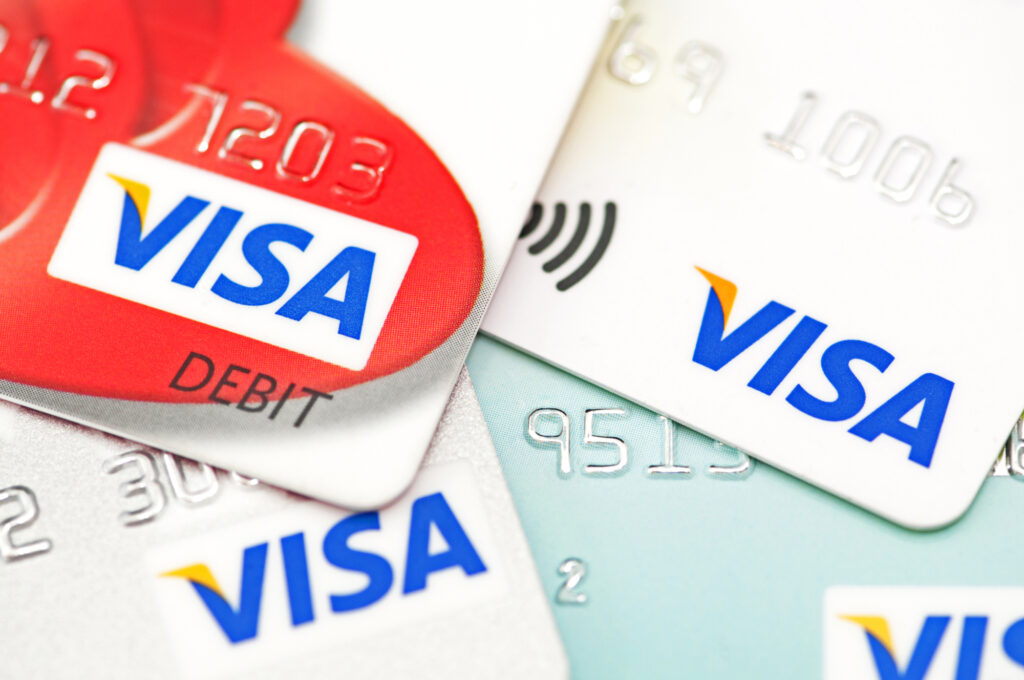Visa has recently announced updates to its surcharge rules for merchants operating in the US and Canada. Effective as of April 15, 2023, merchants in these two countries will now be subject to updated terms related to credit card surcharging.
In this article, we will explore these new surcharge rules by Visa and related updates to analyze their potential impact on consumers and merchants.
What are the new surcharge rules by Visa?
Starting on April 15, 2023, Visa, one of the largest payment networks in the world updated its surcharge rules for merchants in the US and Canada. The new rules have a few implications for merchants, with the main implication being that Visa will now impose a restriction on credit card surcharges and will only allow merchants to charge a maximum of 3% on each transaction. In addition to Visa lowering the maximum surcharge amount from 4% to 3%, merchants are also now only required to notify their acquirers, not Visa, 30 days before beginning surcharging a surcharge program.
Under the new rules, merchants must disclose the surcharge amount to the customer either at the point of sale or on the customer’s receipt. The surcharge amount must be displayed in dollars and cents, and it must not exceed the merchant’s actual cost of accepting Visa credit cards. If a merchant invoices a customer for services and implements a surcharge, they are obligated to disclose the surcharge amount on the invoice.
It’s worth noting that the new rules apply only to credit card transactions processed through Visa payment networks. It is prohibited by federal law for merchants to impose a surcharge on debit card transactions processed through Visa and other payment networks, such as Mastercard, American Express, or Discover.
It’s important to note that not all merchants choose to apply surcharges to credit card transactions. Some merchants may choose not to apply surcharges due to the risk of upsetting their customers or because the cost savings of applying surcharges may not outweigh the potential negative impact on customer satisfaction.
What is the reason for the updates?
There are many reasons why Visa made updates to their surcharge rules in the United States and Canada. One of the speculations around why Visa may have updated their rules is because by making minor adjustments to the maximum surcharge limit, this will help the card networks mitigate their risk and it is a preventative measure to handling customer dissatisfaction.
The new rules enable merchants to apply a surcharge to credit card transactions processed through Visa payment networks, as long as certain conditions are met. These conditions include disclosing the surcharge amount to the customer before the transaction takes place and ensuring that the surcharge amount does not exceed the merchant’s actual cost of accepting Visa credit cards.
The updates to Visa’s surcharge rules are intended to give merchants more flexibility when it comes to processing credit card transactions and to promote transparency in pricing. By allowing merchants to apply surcharges to credit card transactions, customers can better understand the true cost of using credit cards for purchases, which can help them make more informed spending decisions. This could potentially result in more customers purchasing with cash if businesses intend to surcharge customers when using a credit card.
What is the impact on consumers?

The impact of the updates to Visa’s surcharge rules on consumers is a matter of debate. Some consumer advocates have expressed concern that the new rules could lead to higher prices for consumers, as merchants may seek to pass on the cost of accepting credit cards to their customers through surcharges.
However, it’s important to note that merchants are required to disclose the surcharge amount to customers before the transaction takes place, either at the point of sale or on the customer receipt. This means that customers will have the opportunity to make a decision about whether or not to proceed with the transaction, based on the disclosed surcharge amount.
In addition, the new rules only apply to credit card transactions processed through Visa payment networks. Customers can still use other forms of payment, such as debit cards or cash, to avoid potential surcharges. Furthermore, not all merchants may choose to apply surcharges, as they understand it’s potential negative impact on customers.
The impact of the updates to Visa’s surcharge rules on consumers remains to be seen. While some consumers may be unhappy about the potential for surcharges, others may appreciate the increased transparency in pricing that the new rules provide.
It’s important for consumers to be aware of the new surcharge rules and to carefully consider their payment options when making purchases, in order to make the best financial decisions for their individual circumstances.
What is the impact on merchants?
The updates to Visa’s surcharge rules will have a significant impact on merchants. The new rules give merchants the option to apply a surcharge to credit card transactions processed through Visa payment networks, which can help them offset the cost of accepting credit card payments. It is important to note that surcharging programs are illegal in Connecticut and Massachusetts, so this update excludes those states.
This can be particularly beneficial for small businesses that may have tight profit margins and may struggle to absorb the fees associated with credit card transactions. By applying a surcharge, merchants can pass on some of the costs to customers who choose to pay with credit cards, while still accepting credit card payments as a payment option.
However, it’s important to note that merchants who choose to apply surcharges must comply with certain conditions, such as disclosing the surcharge amount to customers before the transaction takes place and ensuring that the surcharge amount does not exceed their actual cost of accepting Visa credit cards.
In addition, merchants may need to update their point-of-sale systems and provide staff training to ensure that they are able to accurately calculate and apply surcharges in accordance with the new rules. Failure to comply with the rules can result in legal action and financial penalties.
The impact of the updates to Visa’s surcharge rules on merchants is mixed. While the ability to apply surcharges may provide some cost relief for merchants, it also comes with added compliance requirements and potential legal risks. It’s important for merchants to carefully consider the potential benefits and drawbacks of applying surcharges and to ensure that they are in compliance with all relevant regulations.
What should consumers and merchants do?

Consumers and merchants both have a role to play in adapting to the updates to Visa’s surcharge rules. Here are some steps that both groups can take:
For consumers:
Be aware of the potential for surcharges when making credit card purchases through Visa payment networks.
Read any signage or disclosures at the point of sale or on the receipt to determine if a surcharge will be applied.
Consider using alternative payment methods, such as debit cards or cash, if surcharges are a concern.
Compare prices and fees across different merchants to make the most informed purchasing decisions.
For merchants:
Determine whether or not to apply surcharges based on careful consideration of the potential benefits and drawbacks.
Ensure compliance with all relevant regulations and conditions for applying surcharges.
Train staff on how to accurately explain to customers how surcharges are applied in accordance with the new rules.
Consider updating point-of-sale systems to ensure that surcharges are applied accurately and transparently.
It’s also important for both consumers and merchants to stay up to date on any further updates or changes to Visa’s surcharge rules, as they may impact their respective roles and responsibilities. By working together to adapt to the new rules, both groups can help ensure that credit card payments through Visa payment networks continue to be a viable and convenient option for everyone involved.
Conclusion
The updates to Visa’s surcharge rules in the US and Canada that became effective on April 15, 2023, represent a significant change for consumers and merchants. While the impact on consumers is likely to be relatively modest, merchants will need to carefully consider whether or not to apply surcharges, and if so, how to do so in compliance with the new regulations.
In order to comply, merchants are implementing a cash discount program which is legal in all 50 states compared to compliant surcharging which is only legal in 48 states. Visa has stated that a true cash discount program is outside the purview of the surcharge rules. Visa has also said that they along with the other card networks are not able to prohibit merchants from offering a discount for any payment method that the merchant allows their customers to use, even cash. They have made it clear that there is no limit on the size of the discount the merchant can offer to their customers.
Ultimately, the updates to Visa surcharging will impact merchants directly, however it truly depends on if the merchant decides to absorb the costs or include their customers as a part of helping pay these fees. With careful attention to the details of the new rules and a commitment to maintaining clear communication and compliance, merchants can continue to provide top tier shopping experiences for their customers and maintain a compliant standing when processing credit card payments through Visa’s card networks.

